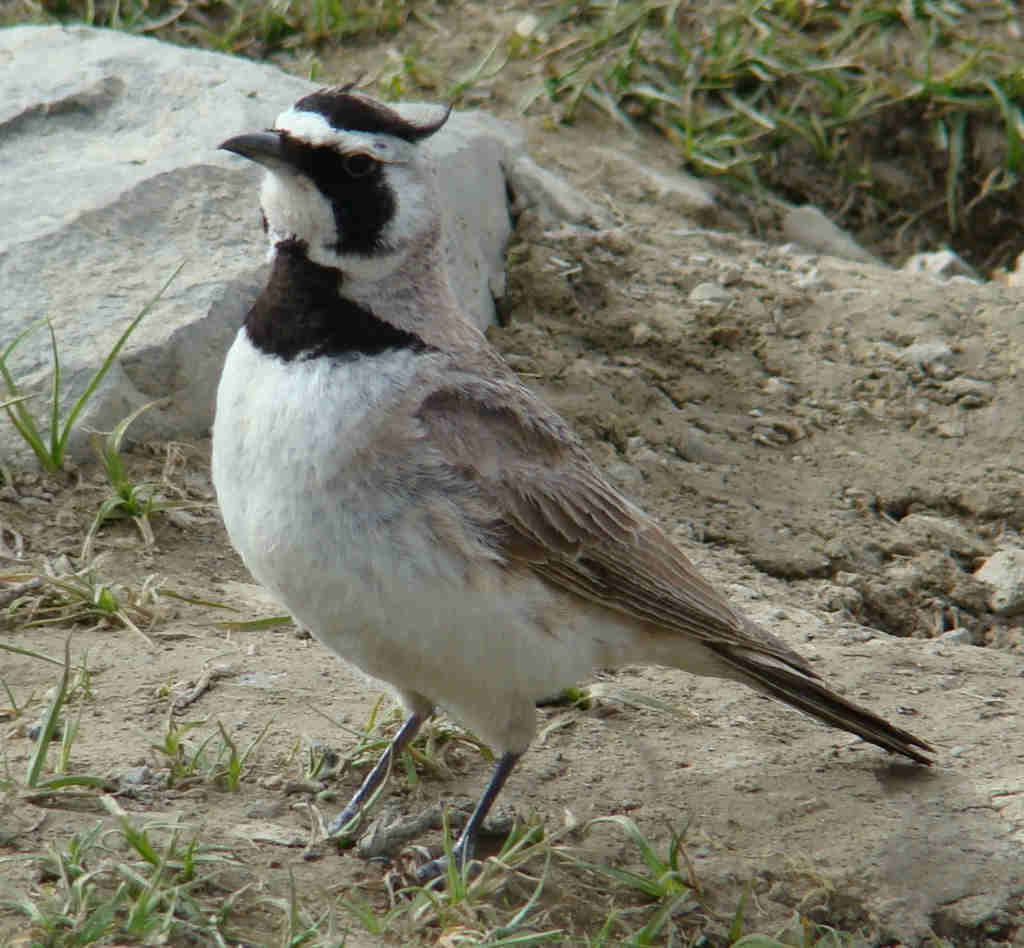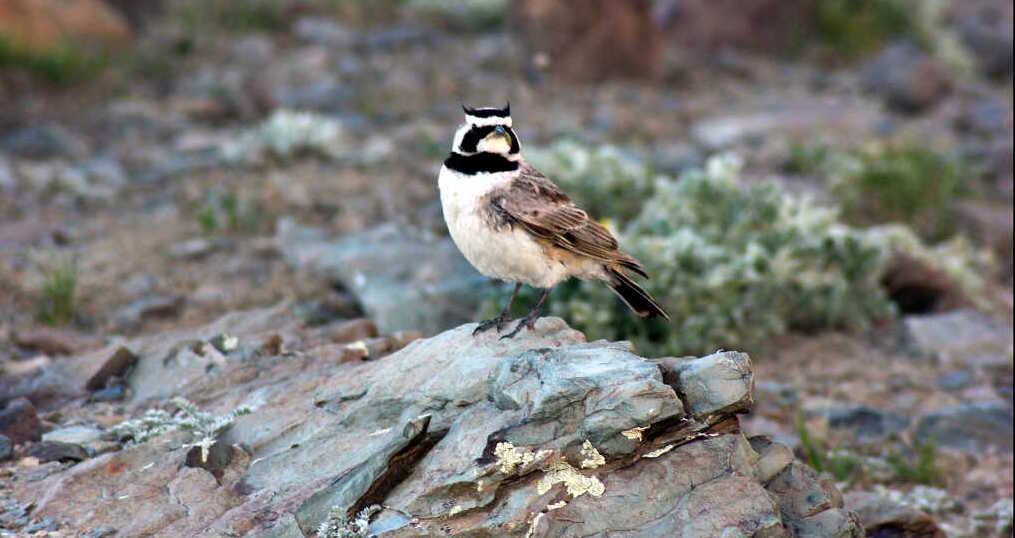
Eremophila alpestris ( Horned lark )
The Horned Lark (Eremophila alpestris) is a small, ground-dwelling passerine bird that thrives in the open alpine meadows and subalpine grasslands of the Great Himalayan National Park (GHNP). Known for the tiny feather tufts or “horns” on its head and its sweet, melodic song, this lark is one of the few bird species that can withstand the harsh high-altitude conditions of the western Himalayas.
Physical Description and Behavior
The Horned Lark has a slender build with sandy-brown upperparts, pale underparts, and a distinct black facial mask and breast band. The most notable feature is the presence of small, black “horns” formed by feather tufts, especially visible in males.
These larks are often found in pairs or small flocks, feeding and nesting directly on the ground. Their flight is swift and undulating, and males are known for their fluttering song displays during the breeding season.
Habitat in GHNP
In GHNP, the Horned Lark is typically found at elevations between 3,000 and 5,000 meters, especially in open grassy slopes, scree-covered ridges, and wind-swept alpine pastures. These areas offer minimal vegetation but are ideal for this species, which prefers open terrain with sparse cover.
Horned Larks construct nests in small depressions on the ground, often camouflaged by surrounding stones and grass tufts to avoid predators.
| Common name | Horned Lark |
| Scientific name | Eremophila alpestris |
| Family | Alaudidae |
| Description | It is a resident bird of high Himalayas. Male has black-and white head pattern and black breast-band. It breeds on stony ground and alpine pastures; winters in fallow cultivation, and on stony and sandy ground. It breed in an altitude of 5400m and in winter it migrates below 3000m. It is commonly seen in higher ranges of Great Himalayan national Park. |
Diet and Role in the Ecosystem
Horned Larks feed on a variety of seeds, insects, and small invertebrates, making them important contributors to pest control and seed dispersal. Their ability to survive on limited resources makes them well-adapted to the nutrient-scarce alpine zones of GHNP.
Conservation Status and Threats
The Horned Lark is classified as a species of Least Concern by the IUCN due to its widespread distribution. However, high-altitude habitats in the Himalayas are under threat from climate change, overgrazing, and habitat encroachment. The protected status of GHNP offers a critical refuge for this resilient species.
Cultural Notes and Observation
Though not as famous as Himalayan pheasants, the Horned Lark is a favorite among birdwatchers and ornithologists for its adaptability and charm. Its chirping song can often be heard early in the morning across the alpine zones of Tirthan and Sainj valleys.




